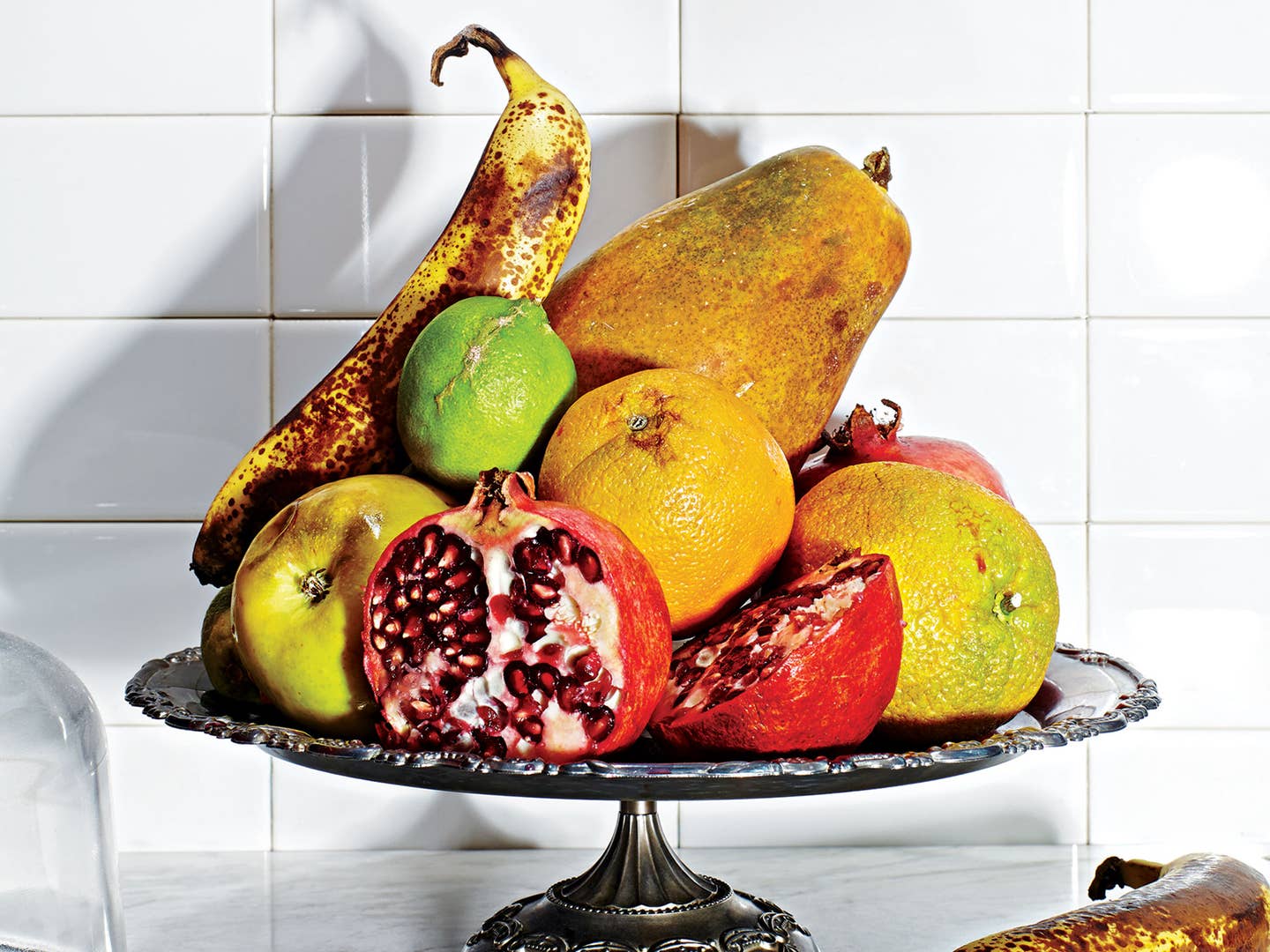
Good Taste Award Winner 2015: Isabel Soares, Doug Rauch, Claire Cummings & Dana Gunders
Isabel Soares was nervous as she stepped up to the stage at the MAD Symposium in Copenhagen, but she knew this was her best chance to alert the culinary world's elite to a monstrous injustice in the food world: rampant discrimination against ugly produce.
Sound crazy? It's not. Produce distributors around the globe have stringent rules for the size, shape, and number of blemishes (usually zero) for a tomato or peach. If the rules were the same for humans, the petite brunette noted wryly, “Being so short, I wouldn't be fit for the market.”
Her solution? Fruta Feia, or Ugly Fruit, a co-op that collects and sells imperfect fruit at bargain prices. Since its founding in 2013, it has rescued more than 140 tons of food. With Soares' help, food waste has become a culinary cause célèbre. This spring, deep-fried skate cartilage, veggie burgers made with leftover pulp from a juicing machine, and cod collars were on the menu at New York City's Blue Hill restaurant during what was essentially Fashion Week for food scraps. If you follow the news, it's difficult to avoid the disturbing statistics: The UN's Food and Agriculture Organization reports that 1.3 billion tons of food is wasted annually. Here in the United States, 40 percent of food, or 80 billion pounds, is tossed out to the tune of $100 billion annually. This, while 1 in 6 Americans faces hunger.
Doug Rauch, the former president of Trader Joe's, wanted to change that. This summer, he opened Daily Table, a grocery store in Dorchester, Massachusetts, that keeps prices low by collecting and selling food that might otherwise be thrown away: milk near its sell-by date, fish that were inadvertently caught, and blemished produce. In addition, the store offers inexpensive, ready-to-eat meals like broccoli soup ($1.29 a tub) and Salisbury steak and brown rice ($1.99)
Only 26, Claire Cummings works similar magic as Bon Appétit Management Company's first-ever waste specialist. With her leadership, the company, which operates cafés in universities and corporations such as Google, announced that by 2018, 80 percent of its 650-plus restaurants will regularly donate excess food to a food bank or other nonprofit. She also helped to launch the Imperfectly Delicious program, which, like Fruta Feia, delivers ugly produce to its network of chefs. In its first year, it saved around 80 tons of food that would otherwise have been destined for the Dumpster.
If you want guidance on doing something about food waste, pick up the just-released Waste-Free Kitchen Handbook (Chronicle Books) by Dana Gunders, a food-waste expert at the Natural Resources Defense Council. It serves up household uses for food scraps (you can use a banana peel to polish your shoes) and storage tricks (broccoli, carrots, and leafy greens go in the high-humidity crisper drawer, while apples, berries, and peppers go in the low-humidity one)—plus 20 recipes for dishes like sour-milk pancakes and chocolate mousse made with overripe avocados. Making a difference has never been more delicious.
Keep Reading
Continue to Next Story










